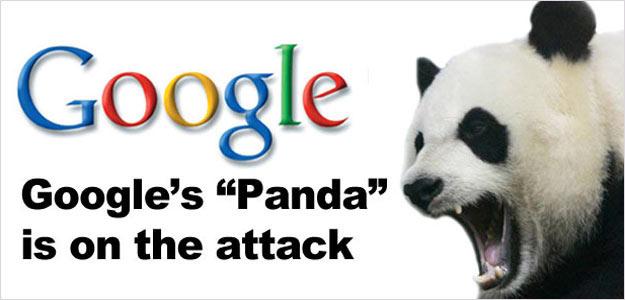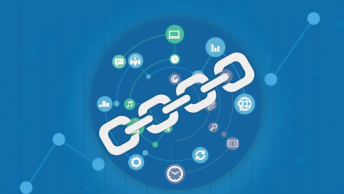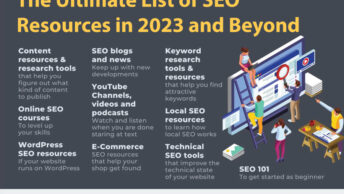
Some may find this an easy question to answer and others may not even understand the question. In fact, it is a somewhat dangerous question to consider and this article will help you understand why. This all relates to the algorithms that Google uses in its search process when people look for web pages related to particular keywords or phrases.
Google Search Algorithms
For many years, Google has been improving the algorithms it uses to attempt to provide the most relevant answers when people do searches. SEOmoz has prepared an excellent history of the changes that Google has made in these algorithms going back to the year 2000 when the Google search toolbar for web browsers was first introduced.
Significant updates of these algorithms have received a variety of names over the years. Some of these names were coined by Google and some by other interested observers. Here we are particularly interested in the Panda update and for completeness it is probably appropriate to also consider the Penguin update since people can get confused about which is which.
Panda Update
… or at least the first of these updates occurred in February, 2011. It also was known as the Farmer update. Here is what the SEOmoz history has to say on this:
Panda/Farmer — February 23, 2011
A major algorithm update hit sites hard, affecting up to 12% of search results (a number that came directly from Google). Panda seemed to crack down on thin content, content farms, sites with high ad-to-content ratios, and a number of other quality issues. Panda rolled out over at least a couple of months, hitting Europe in April 2011.
The name came not from the animal but rather from one Google employee who developed the main principle being used. One in eight webpages being downgraded in keyword search engine report pages (SERPs) is clearly a huge event and caused enormous anguish in the SEO world. Panda is all about the quality of the content of web pages.
Penguin Update
Shortly thereafter, another significant update of the algorithms rolled out and here is how the SEOmoz history describes this:
Penguin — April 24, 2012
After weeks of speculation about an “Over-optimization penalty”, Google finally rolled out the “Webspam Update”, which was soon after dubbed “Penguin.” Penguin adjusted a number of spam factors, including keyword stuffing, and impacted an estimated 3.1% of English queries.
Historically, Google has placed a heavy emphasis on backlinks pointing at web pages. This of course is the basis of their PageRank measurement which may well still have a significant role in Google search algorithms. One aspect of the Penguin update was to heavily downgrade web pages which had a multiplicity of backlinks from other questionable websites.
Recovering From Penguin
Removing all the backlinks that may have triggered a Penguin downgrade is a clearly defined task but of some magnitude with a large website. Google eventually made available a disavowal tool for backlinks so that this could be achieved with greater certainty. However, it presented a dilemma to SEO operators since using it might identify them as people who had been involved previously in SEO over-optimization.
Google Guidance To Those Affected By Panda
On May 06, 2011, for the sites that may have been affected by Panda, Google offered specific additional guidance on how Google searches for high-quality sites.
In quite a long article they suggested that if you want to step into Google’s mindset, a list of 23 questions would provide some guidance on how they look at high-quality in websites.
Some of the questions were quite simple and straightforward:
- Does the site have duplicate, overlapping, or redundant articles on the same or similar topics with slightly different keyword variations?
- Is the content mass-produced by or outsourced to a large number of creators, or spread across a large network of sites, so that individual pages or sites don’t get as much attention or care?
- Does this article have spelling, stylistic, or factual errors?
- Are the articles short, unsubstantial, or otherwise lacking in helpful specifics?
- Are the topics driven by genuine interests of readers of the site, or does the site generate content by attempting to guess what might rank well in search engines?
Other questions were more complex:
- Would you be comfortable giving your credit card information to this site?
- Is the site a recognized authority on its topic?
- Does this article contain insightful analysis or interesting information that is beyond obvious?
Thankfully Google did offer one other specific piece of guidance. Low-quality content on some parts of a website can impact the whole site’s rankings, and thus removing low quality pages, merging or improving the content of individual shallow pages into more useful pages, or moving low quality pages to a different domain could eventually help the rankings of your higher-quality content.
How Are People Recovering From Panda?
If you check the various forums where SEO practitioners meet, you will find that some do feel they have largely overcome whatever penalty Panda may have created for them. In what they describe, they are often following that specific piece of guidance mentioned in the previous paragraph. In other words they are cutting out massive quantities of low quality pages. However they should be aware that Panda was not a one-time event back in 2011 but is an ongoing and continuing process.
The Latest Panda Update
Perhaps you would be surprised to hear that Panda Update #24 was rolled out on January 22, 2013 claiming 1.2% of queries affected according to Google. In other words, applications of the Panda approach and its improvements continue to be applied. That is why the title of this article is oversimple. You may feel you have overcome all the effects that the previous Panda updates have had on your website search engine visibility; however, who knows what the future holds? The message is you should try to ensure that your site contains and grows with only high quality content.
Has the Panda update affected your business or site?Have you been able to recover? Tell us in the comments.
You may be interested in this Visual Timeline of Google Algorithm Updates [Infographic].







I got a love note from Google in webmaster tools back in 2011 telling me about unnatural back links. I haven’t done anything since then except for removing a few back links but my traffic has slowly been falling. Do google punish sites immediately or do they give time to webmasters to take action?
Chris, I would think that the gradual drop in traffic is not a slowly increasing punishment from Google for the backlinks. If action had been taken I believe you would have seen this dramatically and rapidly in terms of reduced visitors from Google search. Analyzing where the traffic is coming from using Google Analytics is the best way of understanding what may be happening.
I have seen some of these letters. They usually occur when a site has too many of one type of backlinks and not enough links from high quality sites, different types of links, and links to their home page.
Remove the links they specifically complained about and then focus on building a wide variety of different kinds of backlinks with a focus on higher quality sites and in content links.
If you have a business with a blog and almost everyone links to your blog posts you will want to build links to your home page. Two simple ways to do that and get links from major sites are to use Universal Business Listings and Knowem. I explained what those are in this post about Google Plus Local.